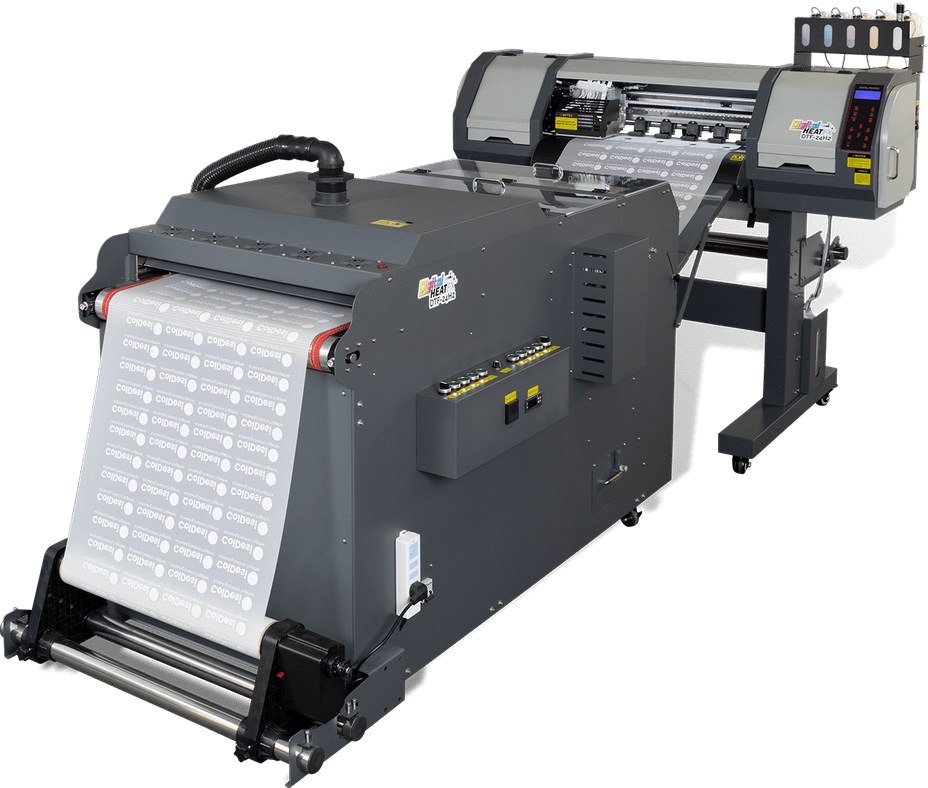Ultimate Overview to DTF Printing Techniques for Stunning Textile Styles
Beginning on the journey of understanding DTF printing techniques can open up a world of opportunities for developing visually fascinating textile styles. As the textile industry remains to advance, staying ahead of the curve with ingenious printing techniques is vital. In this overview, we will certainly check out the complex details of DTF printing, from grasping the fundamental basics to unraveling advanced shade strategies that can boost your styles to new heights. Keep tuned as we delve right into the subtleties of choosing the appropriate products, developing the printing procedure, and getting over typical challenges to attain magnificent outcomes.
Understanding DTF Printing Fundamentals
DTF printing, a process that includes transferring styles from a special film to fabrics using warmth and pressure, creates the structure of fabric printing methods. This ingenious method enables for high-grade, dynamic designs to be perfectly moved onto various textiles with precision and detail. The primary step in DTF printing entails producing or picking a style that will certainly be published onto the fabric. This layout is then printed onto a special film making use of a DTF printer, which utilizes details dyes or pigments to ensure color precision and toughness.
The final outcome is a spectacular, long-lasting fabric style that is cleanable, adaptable, and immune to fading. On the whole, comprehending the basics of DTF printing is vital for grasping this modern fabric printing strategy.
Selecting the Right Fabric Products
Having developed the fundamental concepts of DTF printing techniques for fabric layouts, the following vital consideration exists in choosing the proper fabric materials to enhance this cutting-edge process effectively. Furthermore, the stretchability of these materials can accommodate the heat transfer procedure entailed in DTF printing without misshaping the design. By selecting the appropriate textile products, designers can make best use of the potential of DTF printing to develop long-lasting and sensational fabric styles.

Mastering the Printing Refine
To succeed in DTF printing techniques for textile layouts, grasping the printing procedure is important for accomplishing regular and premium results. The temperature level, stress, and period of warmth application must be very carefully managed to guarantee correct adhesion of the style to the textile. By developing each of these actions in the printing process, developers can constantly generate magnificent and resilient textile designs with DTF printing strategies.
Enhancing Designs With Shade Strategies

In addition, try out go to my blog shade slopes can bring a sense of activity and fluidness to the layout. By blending colors seamlessly, a slope impact can be achieved, adding a vibrant and modern-day touch to the textile design. Furthermore, utilizing shade blocking strategies can develop strong and striking visuals by comparing different solid colors in distinctive sections of the style.
In addition, integrating metallic or neon colors can supply a appealing and unique element to the textile layout, making it stick out and radiate a feeling of vibrancy. When tactically applied, these shade techniques can elevate the general aesthetic charm of textile designs, making them much more unforgettable and fascinating.
Troubleshooting Common DTF Printing Issues
After exploring numerous color strategies to improve fabric layouts, it is important to resolve typical DTF printing problems that may occur throughout the production procedure. One common problem is poor attachment, which can arise from incorrect curing temperatures or times. To settle this issue, guarantee that the healing setups are accurate which the sticky used appropriates for the certain material being printed on. One more frequent challenge is color disparities, where colors might show up in a different way than anticipated. This can be brought on by inaccurate color accounts or settings in the printing software. To tackle this, verify the shade settings and profiles to guarantee they match the designated design. Additionally, problems with picture clarity and intensity can happen due to low-resolution photos or improper printing click to read strategies. To resolve this, constantly make use of premium photos and change the printing settings for optimum clearness. By knowing these usual problems and applying the required troubleshooting steps, you can boost the general high quality of your DTF printed fabric designs.
Verdict
In conclusion, mastering DTF printing methods is necessary for creating magnificent textile styles. By comprehending the fundamentals of DTF printing, selecting the appropriate materials, and improving styles with color techniques, one can accomplish remarkable outcomes. It is necessary to fix common problems that may arise throughout the printing procedure to ensure a successful end result. With method and interest to detail, one can develop lovely and special fabric styles utilizing DTF printing techniques.
DTF printing, a process that involves moving styles from an unique film to textiles making use of warmth and pressure, develops the structure of fabric printing methods.Having developed the foundational principles of DTF printing techniques for textile styles, the next important consideration exists in picking the suitable fabric products to complement this innovative process efficiently. By selecting the appropriate textile materials, developers can make best use of the capacity of DTF printing to develop magnificent and resilient fabric layouts.
To succeed in DTF printing techniques for fabric designs, mastering the printing procedure is necessary for achieving constant and high-grade outcomes. DTF Printing. By sharpening each of these steps in the printing procedure, designers can regularly produce sensational and long lasting textile styles with DTF printing strategies